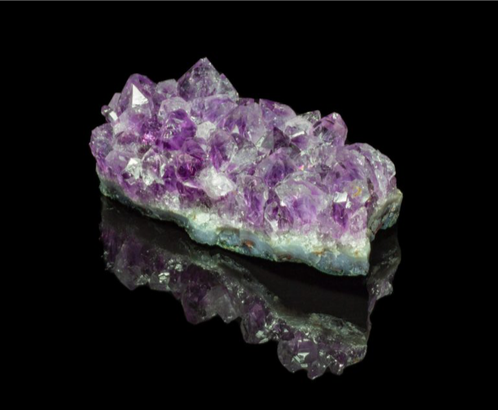It’s February and Here’s Why Amethyst is Your Birthstone
The Origination of Birthstones
So where does this tradition of a birthstone originate? Most researchers believe the celebration of stones stems from the Bible and specifically, the book of Exodus. Among those verses is a detailed description of the sacred breastplate worn by a priest that featured 12 gemstones purportedly representing the 12 tribes of Israel. These dozen gems were later transcribed to represent the months of the year on the Hebrew calendar.
Following more than a century of updates, replacements, switches and changes, the Jewelers of America (a trade association of professionals in the jewelry industry) has adopted an official list of birthstones with one and sometimes more gems highlighting each month, with amethyst posing as February’s calendar sparkler.
According to the Gemological Institute of America (GIA), amethyst has historically been a most popular gemstone among members of royal families both in Europe and Asia. Once as rare as emeralds and rubies, these purple-hued stones were associated with the Greek gods — in particular, Bacchus, the god of wine.
Ironically, the word amethyst comes from the Greek word amethystos, which refers to a cure for hangovers. Expanding on that theme, the stone is purported to have the power to bring a clear head to the wearer. And during the Renaissance (between the 14th and 17th centuries), it was touted as having the power to curtail amorous overabundance.
Extraordinary Coloring Make Amethyst Stand Out
Among the most colorful of the birthstones, amethyst features a wintery purple complexion that befits its inclusion as February’s sparkling designation. Because this month is often cold and dark in many parts of the United States, this is the perfect stone for those seeking some warmth and color. Highlighted by a striking and unique lilac color, amethyst stones are derived from a quartz containing iron and other trace minerals. And while quartz is the second most abundant mineral found within the Earth (feldspar is first), it is the impurities and irradiation that are responsible for its oft-brilliant purplish hue.
In truth, representations of amethyst can range from a pinkish violet to a deep, deep purple. It can feature tones of red or blue, depending on the light illuminating the gem, and a single gemstone can have several layers of color variation.
The Who, What, and Where of Amethyst
Among amethyst’s most famous aficionados were Catherine the Great of Russia, who is shown in paintings wearing strikingly purple gems embedded in necklaces, earrings and other jewelry. Also, Wallis Simpson, the American socialite whose marriage to the British king Edward VIII led to his abdication, wore a Cartier amethyst necklace after she became the Duchess of Windsor. Even in later years, as amethyst was discovered and mined in areas of several continents, the gem remained popular — and then affordable — for those who might not have royal blood running through their veins. Today, amethyst mines are active in all corners of the world, including Brazil, Zambia, the United States and Canada.
Before the 1800s, the mines of Russia were just about the only source for amethyst, until a century later when the purple gem was discovered — in great abundance — in southern Brazil. And while that South American country is still a major supplier, Bolivia rediscovered a three-century-old mine in the Pantanal wetlands in the 1960s that produces a two-color amethyst crystal called ametrine that remains popular today.
In Zambia on the African continent, one mine alone is among the largest producers of quality amethyst in the world. And most recently, in the Mazatzal Mountains just an hour or so commute from Phoenix, Ariz., can be found the Four Peaks amethyst mine, which offers dark purple and red-and-purple crystals that are also unique.
Give Amethyst on your 6th Wedding Anniversary
In addition to birthdays, the amethyst is listed as a traditional gift for a couple’s sixth wedding anniversary. So, whether it is amethyst as a birthday gift that you seek, or as an anniversary present, keep in mind that there are amethysts out there that are created in the laboratory. These have the same properties and chemical makeup of the natural stone, and in many cases, it’s difficult to tell the difference without testing. Nevertheless, a gemologist or merchant has the responsibility to tell you if the stone you are purchasing is natural or synthetic.
If you want to learn more about birthstones, visit an expert. At Shmukler Design, we have experienced jewelers who can expand on the history of your favorite gemstone, as well as point you in the direction of the piece of jewelry that best fits your needs.


